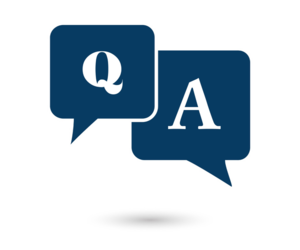“How often should I get acupuncture?”
I go for an acupuncture session every three months to help clear my mind. It's really to help me ease my anxiety, more than anything else. How often should I go get acupuncture?
20 Answers
AcupuncturistAcupuncture
Not enough, if you want to get rid of the problem, go for a course of 10-12 sessions once or twice a week
If you're going once every three months to relieve stress, what you are describing is similar to getting a massage every few months.
If you want to address a health condition a single treatment here or there is unlikely to produce a total resolution of a health issue. A commonly used explanation likens treatment to pushing a car out of mud. One push and the car rocks out a little but settles back into the mud. However, enough pushes and the car gains the momentum needed to move out of the mud and back onto the road. As the treatments accumulate, momentum begins and you may find other symptoms you thought were unrelated also resolve.
Here is the standard guidelines for a course of treatment of acupuncture. I hope this helps.
Evidence-based treatment guidelines
Course of Treatment Based on Peer Reviewed Clinical Coverage Guidelines Devised by Centers for Medicare and Medicaid Services (CMS), National Coverage Determination for Acupuncture and Foundation for Acupuncture Research. Acupuncture and electroacupuncture.
Normally an initial course of treatment consists of 12 to 18 treatments over a 4 to 6-week period, depending on complicating factors. For acute conditions, fewer treatments may be necessary to observe a therapeutic effect and to obtain complete recovery. For chronic conditions, such as in this case, and in conditions with complicating factors, extended treatment is recommended to observe response to treatment.
As in most types of therapy, the earlier the patient receives treatment, the greater the probability of recovery, and the shorter the time to recovery. Acupuncture is commonly utilized in chronic conditions because of effectiveness in pain management and limited treatment options. However, it should be noted that acupuncture and electro-acupuncture can lead to complete recovery in many NMS conditions when it is offered in the acute and sub-acute stages of injury, particularly when used in conjunction with other therapeutic interventions, such as range of motion (ROM) and strengthening exercises and manual manipulation of the soft tissue.
Acupuncture or electroacupuncture are rarely performed as a single treatment, but are usually prescribed and performed as a series, or "course of treatments." Thus, treatment planning requires a recommendation for the number, frequency, and duration of treatments that is appropriate based upon the nature and extent of the injuries and the prognosis for a progressive and timely recovery from those injuries. Severe injuries, multiple injuries, metabolic disorders, and other complicating factors may require more frequent treatments over a longer duration of time. For example, while some multiple injuries can be treated simultaneously, others must be treated independently and sequentially, requiring increased treatment frequency.
Recommended Additional Course of Treatment
A conservative recommendation of a series of 12 additional visits are recommended. Treatment based on medical necessity shall be determined at time of service based on subjective complaints and observations.
Re-Evaluation: A detailed or focused re-evaluation designed to determine the patient's progress and response to treatment should be conducted at the end of each course of treatment. Additionally, a brief assessment of the patient’s response to each treatment should be noted after each treatment is completed, and again before the next one is started, and recorded in progress notes (e.g., SOAP notes). When a patient's condition is not responding to treatment for a period of 2 to 3 weeks, a more thorough re-evaluation should be conducted immediately to determine if the condition is different or more serious than the initial diagnosis had indicated and/or whether the condition requires further diagnostic testing and/or referral to other diagnostic or treatment specialists.
Follow-up courses of treatment may be similar in frequency and duration to the initial course of treatment. However, one of the goals of any treatment plan should be to reduce the frequency of treatments to the point where maximum therapeutic benefit continues to be achieved while encouraging more active self-therapy, such as strengthening and range-of-motion (ROM) exercises, and rehabilitative exercises. The frequency of continued treatment generally depends upon the severity and duration of the condition; treatment benefits are generally stronger and last longer as a condition moves from acute towards complete resolution and as the patient takes a more active role in his or her recovery.
• Acute - 2-3 treatments per week for 4 weeks, decreasing frequency as symptoms resolve and are reduced. Reevaluate after 12th visit.
• Sub-Acute - 2-3 treatments per week for up to four weeks. 1-2 treatments per week thereafter for up to 6-8 weeks. This is also the time when a rehabilitation exercise program is usually introduced. Reevaluate after 12th visit.
• Chronic – 12 visits, 1-2 treatments per week for 6-8 weeks. Reevaluate after 12th visit.
• Recurrent/Flare-Up - 1-2 treatments per week for 6-8 weeks. Reevaluate after 12th visit.
Acupuncture is considered medically necessary for the following indications:
• As a treatment for acute or chronic pain, including postoperative, musculoskeletal, neurogenic, vascular, craniomandibular, and malignant pain; OR,
• For postoperative nausea and vomiting (including children); OR,
• For morning sickness associated with pregnancy; OR,
• For chemotherapy-associated nausea and vomiting
The Acupuncture Clinical Guidelines/Plan of Care Recommendations - Peer Reviewed: 1. Hayes Directory. Acupuncture for Pain. January 20, 2005.2. Hayes Directory. Acupuncture and Acupressure for the Treatment of Nausea and Vomiting. June 20, 2005.3. Hayes Directory. Acupuncture for Treatment of Addictive Behavior. May 31, 2005. Government Agencies, Professional and Medical Organizations: 1. Centers for Medicare and Medicaid Services (CMS), National Coverage Determination for Acupuncture (30.3)2. Centers for Medicare and Medicaid Services (CMS), National Coverage Determination for Acupuncture for Fibromyalgia (30.3.1)3. Centers for Medicare and Medicaid Services (CMS), National Coverage Determination for Acupuncture for Osteoarthritis (30.3.2)4. Council of Acupuncture and Oriental Medicine Associates (CAOMA), Foundation for Acupuncture Research. Acupuncture and electroacupuncture. Evidence-based treatment guidelines. Calistoga (CA): Council of Acupuncture and Oriental Medicine Associates (CAOMA); 2004 Dec.
If you want to address a health condition a single treatment here or there is unlikely to produce a total resolution of a health issue. A commonly used explanation likens treatment to pushing a car out of mud. One push and the car rocks out a little but settles back into the mud. However, enough pushes and the car gains the momentum needed to move out of the mud and back onto the road. As the treatments accumulate, momentum begins and you may find other symptoms you thought were unrelated also resolve.
Here is the standard guidelines for a course of treatment of acupuncture. I hope this helps.
Evidence-based treatment guidelines
Course of Treatment Based on Peer Reviewed Clinical Coverage Guidelines Devised by Centers for Medicare and Medicaid Services (CMS), National Coverage Determination for Acupuncture and Foundation for Acupuncture Research. Acupuncture and electroacupuncture.
Normally an initial course of treatment consists of 12 to 18 treatments over a 4 to 6-week period, depending on complicating factors. For acute conditions, fewer treatments may be necessary to observe a therapeutic effect and to obtain complete recovery. For chronic conditions, such as in this case, and in conditions with complicating factors, extended treatment is recommended to observe response to treatment.
As in most types of therapy, the earlier the patient receives treatment, the greater the probability of recovery, and the shorter the time to recovery. Acupuncture is commonly utilized in chronic conditions because of effectiveness in pain management and limited treatment options. However, it should be noted that acupuncture and electro-acupuncture can lead to complete recovery in many NMS conditions when it is offered in the acute and sub-acute stages of injury, particularly when used in conjunction with other therapeutic interventions, such as range of motion (ROM) and strengthening exercises and manual manipulation of the soft tissue.
Acupuncture or electroacupuncture are rarely performed as a single treatment, but are usually prescribed and performed as a series, or "course of treatments." Thus, treatment planning requires a recommendation for the number, frequency, and duration of treatments that is appropriate based upon the nature and extent of the injuries and the prognosis for a progressive and timely recovery from those injuries. Severe injuries, multiple injuries, metabolic disorders, and other complicating factors may require more frequent treatments over a longer duration of time. For example, while some multiple injuries can be treated simultaneously, others must be treated independently and sequentially, requiring increased treatment frequency.
Recommended Additional Course of Treatment
A conservative recommendation of a series of 12 additional visits are recommended. Treatment based on medical necessity shall be determined at time of service based on subjective complaints and observations.
Re-Evaluation: A detailed or focused re-evaluation designed to determine the patient's progress and response to treatment should be conducted at the end of each course of treatment. Additionally, a brief assessment of the patient’s response to each treatment should be noted after each treatment is completed, and again before the next one is started, and recorded in progress notes (e.g., SOAP notes). When a patient's condition is not responding to treatment for a period of 2 to 3 weeks, a more thorough re-evaluation should be conducted immediately to determine if the condition is different or more serious than the initial diagnosis had indicated and/or whether the condition requires further diagnostic testing and/or referral to other diagnostic or treatment specialists.
Follow-up courses of treatment may be similar in frequency and duration to the initial course of treatment. However, one of the goals of any treatment plan should be to reduce the frequency of treatments to the point where maximum therapeutic benefit continues to be achieved while encouraging more active self-therapy, such as strengthening and range-of-motion (ROM) exercises, and rehabilitative exercises. The frequency of continued treatment generally depends upon the severity and duration of the condition; treatment benefits are generally stronger and last longer as a condition moves from acute towards complete resolution and as the patient takes a more active role in his or her recovery.
• Acute - 2-3 treatments per week for 4 weeks, decreasing frequency as symptoms resolve and are reduced. Reevaluate after 12th visit.
• Sub-Acute - 2-3 treatments per week for up to four weeks. 1-2 treatments per week thereafter for up to 6-8 weeks. This is also the time when a rehabilitation exercise program is usually introduced. Reevaluate after 12th visit.
• Chronic – 12 visits, 1-2 treatments per week for 6-8 weeks. Reevaluate after 12th visit.
• Recurrent/Flare-Up - 1-2 treatments per week for 6-8 weeks. Reevaluate after 12th visit.
Acupuncture is considered medically necessary for the following indications:
• As a treatment for acute or chronic pain, including postoperative, musculoskeletal, neurogenic, vascular, craniomandibular, and malignant pain; OR,
• For postoperative nausea and vomiting (including children); OR,
• For morning sickness associated with pregnancy; OR,
• For chemotherapy-associated nausea and vomiting
The Acupuncture Clinical Guidelines/Plan of Care Recommendations - Peer Reviewed: 1. Hayes Directory. Acupuncture for Pain. January 20, 2005.2. Hayes Directory. Acupuncture and Acupressure for the Treatment of Nausea and Vomiting. June 20, 2005.3. Hayes Directory. Acupuncture for Treatment of Addictive Behavior. May 31, 2005. Government Agencies, Professional and Medical Organizations: 1. Centers for Medicare and Medicaid Services (CMS), National Coverage Determination for Acupuncture (30.3)2. Centers for Medicare and Medicaid Services (CMS), National Coverage Determination for Acupuncture for Fibromyalgia (30.3.1)3. Centers for Medicare and Medicaid Services (CMS), National Coverage Determination for Acupuncture for Osteoarthritis (30.3.2)4. Council of Acupuncture and Oriental Medicine Associates (CAOMA), Foundation for Acupuncture Research. Acupuncture and electroacupuncture. Evidence-based treatment guidelines. Calistoga (CA): Council of Acupuncture and Oriental Medicine Associates (CAOMA); 2004 Dec.
I always tell my patients to listen to their body. Once we back off on treatments to one a month, I leave them in control on the frequency that best suits them. I always recommend at the change of seasons at the very least. So 4 times per year. I have people still come once a week or once a month because they feel their best when they keep up with it. Some like just a massage once a month. It all depends on you.
Sorry, but there really is no pat answer. There are no "shoulds" in acupuncture. Really think about how you feel when you go in for a treatment and see how long the relief from anxiety lasts. In addition to acupuncture, I would highly suggest doing self-soothing exercises such as yoga, meditation, tai chi, etc. I find that taking several deep breaths in through the nose and out through the mouth really helps me to gain perspective. Allowing (unlabored) oxygen to the brain helps clear the mind, lowers blood pressure (over time), lowers cortisol levels and generally helps you to feel better physically and emotionally. Very often free classes of tai chi/meditation/yoga are offered through local or civil groups. You will find that engaging in these type of activities helps reduce anxiety, therefore, reducing the amount of times you need to get acupuncture. Good luck!!
Hi there,
Please see your regular primary care physician for a proper diagnosis, recommendation, and referral. It all depends on your condition and the level of anxiety. If you think once in three months helps, then keep doing it. Also, ask your acupuncturist, because he/she diagnosed you.
Please see your regular primary care physician for a proper diagnosis, recommendation, and referral. It all depends on your condition and the level of anxiety. If you think once in three months helps, then keep doing it. Also, ask your acupuncturist, because he/she diagnosed you.
That is a great question because frequency of treatments is one important factor in getting success with acupuncture.
Initially having several treatments in a row (1-3 times a week for 3-4 weeks) is usually best. Sessions done closer together can build on each other, providing deeper and more sustained relief of anxiety.
After completing the initial treatment series, monthly maintenance sessions are often recommended. However, you may find that your current timetable of once every three months is sufficient to sustain the results you seek. Let that be your guide.
Initially having several treatments in a row (1-3 times a week for 3-4 weeks) is usually best. Sessions done closer together can build on each other, providing deeper and more sustained relief of anxiety.
After completing the initial treatment series, monthly maintenance sessions are often recommended. However, you may find that your current timetable of once every three months is sufficient to sustain the results you seek. Let that be your guide.
If every three months has been working for you, then just continue with what you are doing. There are no set amounts for treatment that would be right for everyone. My patients who treat for wellness come in generally once a month but then again, it is up to the individual and the acupuncturist to come up with the best plan for treatment.
For acute conditions, 1-3 visits; for chronic conditions, needs 10 or even monthly visits. In general, if not acute, we start with 6 visits. Remember, acupuncture has accumulated effects based on a study.
Happy holiday season,
The answer for your question is it depends on the chief complaint and severity. You need to discuss this question with your acupuncturist.
Take care,
David
The answer for your question is it depends on the chief complaint and severity. You need to discuss this question with your acupuncturist.
Take care,
David
I cannot advise the frequency of treatments you need if I don't see you personally, but if you are happy with the seasonal treatments that is a good start. I generally advise my patients to come in each season to stay balanced, but if they need it more (anxiety returns often, stress from life change or work issue, emergency situation, etc) then they should come more.
Keep in mind you can also get acupuncture for pain issues, for colds/flu, for sleep issues and a whole plethora of ailments. So, go when you feel sick for any reason. The amount of times to go, however, is determined by you and your practitioner.
Keep in mind you can also get acupuncture for pain issues, for colds/flu, for sleep issues and a whole plethora of ailments. So, go when you feel sick for any reason. The amount of times to go, however, is determined by you and your practitioner.
Ms. Megan Donahue
Acupuncture
Acupuncture treatments are based on individual needs. If three months in between helps you, then that's great! I would say, be aware of level of stresses or triggers and maybe schedule around those. You may be able to go longer if you incorporate things like mediation, massage, or yoga. Acupuncture helps to balance the mind, body, and spirit.
If you are doing it as a maintenance, I would suggest to go every 4-6 weeks.
Dr. Maryam Mansouri, Lac. OMD.
Dr. Maryam Mansouri, Lac. OMD.
When I begin treating someone for any ailment - whether physical or emotional, I see them twice a week until the symptoms go down and stay down between treatments. Then I go into maintenance at once a week until those treatments hold, then once every two weeks, and so on. Once every few months is simply a tune up after the anxiety is taken care of, not a treatment schedule.
Depends on the severity of the issue. I have patients who are seeing me for anxiety and they have seen major results in an average of 5-6 consecutive sessions, at once a week. The whole goal is to recondition the mind and body to resolve and treat the major root problem, not to repress symptoms as they arise.
If every three months is working for you, I wouldn't change anything. Generally, acupuncture is a front-loaded treatment. We see a patient fairly often initially (often weekly or more) and then start spreading the appointments out until we hit some maintenance schedule that works well for whatever health issue we're addressing.








